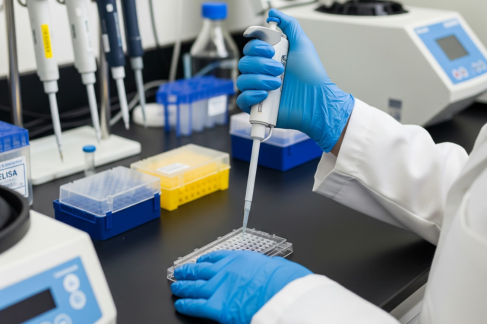Our body relies on arteries to deliver life-sustaining oxygen and nutrients to every organ and tissue. These blood vessels act as high-pressure highways. They carry oxygen-rich blood from the heart to the brain, kidneys, muscles, and more.
So, our arteries must remain open, flexible, and free of blockages to perform this critical job efficiently. However, low-density lipoprotein and other fatty substances accumulate over time in the artery walls. These deposits trigger an inflammatory response and lead to the formation of plaque. As plaque grows, it can narrow the arteries or rupture. This condition is known as Atherosclerosis. This can further lead to restricted blood flow, heart attack, strokes, and other cardiovascular complications.
The common causes of Atherosclerosis are:
- Bad cholesterol
- Hypertension
- Smoking
- Diabetes
- Inflammation
- Obesity
- Poor diet
- Sedentary lifestyle
- Stress
- Age
- Genetics
Its symptoms usually appear in advanced stages. Early detection is the key to effective intervention and prevention. Here is where ELISA test kits come into play.
What is ELISA?
ELISA stands for Enzyme-Linked Immunosorbent Assay. It is a plate-based technique that relies on antigen-antibody interactions to detect and quantify the amount of proteins present in the biological samples.
During Atherosclerosis, our body’s immune system responds and triggers a series of biological responses. It releases various biomolecules into the bloodstream. These biomolecules act as biomarkers that indicate the presence of disease, even if no physical symptoms appear.
The biomarkers include:
- Lipoprotein(a)
- Oxidized LDL (OxLDL)
- C-reactive protein (CRP)
- Interleukin-6 (IL-6)
- Tumor necrosis factor-alpha (TNF-α)
- Matrix metalloproteinases (MMPs)
ELISA kits are highly sensitive and specific diagnostic tools. They help detect and quantify these biomarkers.
For instance:
Researchers use a human lipoprotein(a) (Lp(a)) ELISA kit to acutely detect the concentration of Lipoprotein(a) in a blood sample. High levels of Lp(a) show that the patient is at high risk of Atherosclerosis and cardiovascular diseases.
Since Lp(a) levels remain relatively stable over time compared to LDL, this makes it a reliable biomarker for analyzing long-term cardiovascular risk. As a result, this helps researchers to identify individuals who are at high risk and prevent heart attacks or strokes later on.
What is the Role of ELISA in Atherosclerosis?
Apart from detecting crucial Atherosclerosis biomarkers, ELISA kits can help:
Detect Inflammation
Atherosclerosis leads to inflammation in the body. In response, the immune system releases inflammatory molecules like C-reactive protein (CRP), Interleukin-6 (IL-6), and Tumor Necrosis Factor-alpha (TNF-α) into the bloodstream.
High levels of these markers indicate the beginning of arterial damage. At times, a human CRP ELISA kit allows researchers to quantify CRP levels in serum or plasma. Moreover, this test helps clinicians to assess the degree of inflammation, track disease progression, and evaluate treatment efficacy.
Monitor Oxidative Stress and Plaque Instability
Oxidized low-density lipoprotein (OxLDL) is the modified form of LDL. It contributes to plaque formation and triggers immune responses. It is not a marker for only oxidative stress, but it also plays a critical role in making plaque unstable and prone to rupture. This further leads to heart attacks.
OxLDL ELISA Kits are designed to specifically detect and quantify oxidized forms of LDL in blood samples. High OxLDL level shows that the patient is at high risk of acute cardiovascular events. So, it can be a early-warning indicator of cardiovascular disease.
In addition, ELISA kits are used to measure the level of MMPs. MMPs (Matrix Metalloproteinases) is a group of enzymes that degrade extracellular matrix components. These components can destabilize plaques. As a result, ELISA can be helpful for researchers to assess plaque vulnerability and potential rupture risk.
The Bottom Line
Atherosclerosis may silently progress for years before symptoms emerge. By the time chest pain or stroke occurs, significant and possibly irreversible arterial damage might have already happened. This is why early detection using ELISA kits is crucial. Not only can this technique help in early detection but also help monitor disease progression and evaluate treatment effectiveness.



